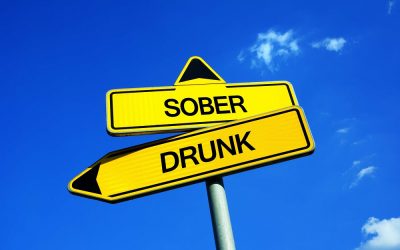In contrast, other studies found no change in the response to GABAA agonists (Allan and Harris 1987; Tremwel et al. 1994), and studies of ligand binding to GABAA receptors also did not reveal consistent reductions in receptor numbers (see Tabakoff and Hoffman 1996). Furthermore, electrophysiological analyses of brain samples from ethanol-withdrawn animals suggested that the observed seizures did not arise from changes in GABAA receptor function (Ripley et al. 1996). A more recent study (Olsen et al. 2005) using chronic intermittent alcohol exposure (i.e., several episodes of ethanol exposure and withdrawal), however, reported impaired GABAA receptor function in the hippocampus; moreover, the animals exhibited greater susceptibility to seizures and increased anxiety.
Substance use, abuse, and addiction – APA Psychology News
Substance use, abuse, and addiction.
Posted: Sat, 15 May 2021 02:23:41 GMT [source]
With consistent heavy drinking, the delicate balance of these chemical messengers becomes disrupted, resulting in altered moods, behaviors, and mental well-being. Although some researchers have proposed that ethanol binds directly to GABAA receptors (Wick et al. 1998), the variability of results suggests that alcohol affects receptor function more indirectly (e.g., via phosphorylation events). This hypothesis is supported by observations that when phosphorylation is prevented by inhibiting PKC, the receptors’ sensitivity to ethanol is reduced (Weiner et al. 1994). Similarly, some studies found that receptors obtained from mice that lack a certain PKC variant were less sensitive to ethanol than receptors from normal mice (Bowers et al. 1999; Harris et al. 1995; Weiner et al. 1994). However, receptors from mice that lack another PKC variant, or from mice in which that PKC variant is inhibited, showed increased sensitivity to ethanol and benzodiazepine potentiation (Hodge et al. 1999; Proctor et al. 2003; Qi et al. 2007). Thus, the exact role that phosphorylation by PKC plays in mediating ethanol’s effects on the GABAA receptor depends on the presence or absence of particular forms of the kinase in a given cell.
Hallucinogen, inhalant withdrawal
However, despite the many commonalities across substances, substance-specific genetic and environmental liability factors (Tsuang et al., 1998, Kendler et al., 2003) indicate that individuals often prefer one substance to others. Understanding how the general liability for substance use or disorders is expressed for a particular substance is important for designing appropriate substance specific prevention or intervention programs. A proposed framework for “addiction specificity” (Sussman et al., 2011) lays out the complex relationships between both individual and group level factors that influence which substance an individual is most likely to use (and develop a SUD). An individual’s initial response to a substance may affect future use or disorder (de Wit and Phillips, 2012); e.g., unpleasant flushing response to alcohol decreases the likelihood of alcohol use disorders (Edenberg, 2007) or stimulating effects of alcohol increase risk (King et al., 2014).

To exert these effects, GABA acts via presynaptic and postsynaptic ionotropic (GABAA) and metabotropic (GABAB) receptors. The GABAA receptor, which is expressed widely in the central nervous system, is a protein complex that is linked to a chloride channel. When activated by GABA, the channel opens to allow chloride ions to pass through the cell membrane, thereby increasing the difference in electrical charge between the inside and outside the cell (Mohler 2006; Sieghart https://ecosoberhouse.com/article/benzodiazepine-withdrawal-symptoms-timeline-and-treatment/ and Sperk 2002) (see figure 5A). Through this mechanism, GABAA receptor-coupled chloride channels mediate fast synaptic inhibition in the brain. GABAB receptors, in contrast, like mGluRs, are linked to G-proteins (see Bettler and Tiao 2006; Kornau 2006). This effect displays an inverse U-shaped dose-response curve, meaning that lower ethanol concentrations produce a greater effect than higher concentrations (de Waele and Gianoulakis 1993; Gianoulakis 1990).
The Primary Brain Regions Involved in Substance Use Disorders
We also excluded a study with incomplete assessment of abuse criteria (Kuerbis et al., 2013a). “Criteria sets” refer to the 11 criteria for DSM-IV abuse or dependence, or for DSM-5 substance use disorder, with 10 criteria for hallucinogens and inhalants (withdrawal is excluded) (Table 1). Heroin and prescription opioids were considered together because they have the same DSM-5 withdrawal syndrome. As Table 3 shows, many studies covered alcohol or cannabis, with fewer studies of less prevalent substances. This work may inform the development of more precise preventive and treatment interventions.
As a result, an electrical signal (i.e., action potential) is generated that can be further transmitted throughout the cell to the axon. In addition, the increase in Ca2+ in the cell activates second messenger signaling pathways, including one physiological dependence on alcohol involving a molecule called protein kinase A (PKA), and other kinases. Importantly, the location of AMPA receptors at the synapse is not fixed, and these receptors can be transported to and away from the postsynaptic membrane as needed.


